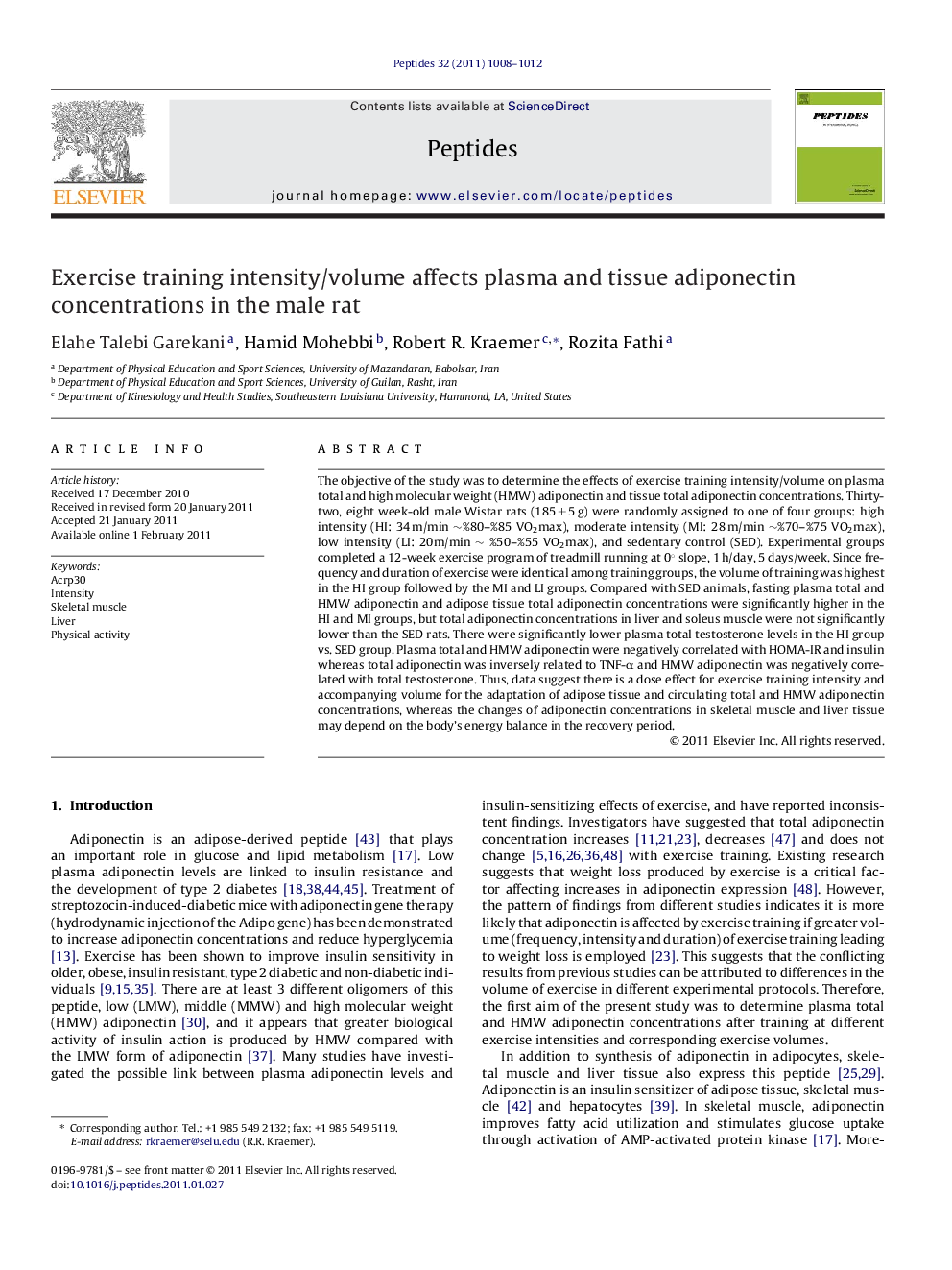| Article ID | Journal | Published Year | Pages | File Type |
|---|---|---|---|---|
| 2006554 | Peptides | 2011 | 5 Pages |
The objective of the study was to determine the effects of exercise training intensity/volume on plasma total and high molecular weight (HMW) adiponectin and tissue total adiponectin concentrations. Thirty-two, eight week-old male Wistar rats (185 ± 5 g) were randomly assigned to one of four groups: high intensity (HI: 34 m/min ∼%80–%85 VO2max), moderate intensity (MI: 28 m/min ∼%70–%75 VO2max), low intensity (LI: 20m/min ∼ %50–%55 VO2max), and sedentary control (SED). Experimental groups completed a 12-week exercise program of treadmill running at 0° slope, 1 h/day, 5 days/week. Since frequency and duration of exercise were identical among training groups, the volume of training was highest in the HI group followed by the MI and LI groups. Compared with SED animals, fasting plasma total and HMW adiponectin and adipose tissue total adiponectin concentrations were significantly higher in the HI and MI groups, but total adiponectin concentrations in liver and soleus muscle were not significantly lower than the SED rats. There were significantly lower plasma total testosterone levels in the HI group vs. SED group. Plasma total and HMW adiponectin were negatively correlated with HOMA-IR and insulin whereas total adiponectin was inversely related to TNF-α and HMW adiponectin was negatively correlated with total testosterone. Thus, data suggest there is a dose effect for exercise training intensity and accompanying volume for the adaptation of adipose tissue and circulating total and HMW adiponectin concentrations, whereas the changes of adiponectin concentrations in skeletal muscle and liver tissue may depend on the body's energy balance in the recovery period.
Research highlights► Compared with SED animals, plasma total and HMW adiponectin and adipose tissue total adiponectin concentrations were significantly higher in animals completing 12 weeks of exercise at high and moderate exercise training intensity/volumes, but not low intensity training/volume. ► Plasma total and HMW adiponectin were negatively correlated with HOMA-IR and insulin whereas total adiponectin was inversely related to TNF-α and HMW adiponectin was negatively correlated with total testosterone. ► Data suggest there is a dose effect for exercise training intensity and accompanying volume for the adaptation of adipose tissue and circulating total and HMW adiponectin concentrations.
